#Diodorus Siculus
Text
„A peculiar thing also came to pass in connection with the birth of this god [Herakles]. The first mortal woman, for instance, with whom Zeus lay was Niobê, the daughter of Phoroneus, and the last was Alcmenê, who, as writers of myths state in their genealogies, was the sixteenth lineal descendant from Niobê. It appears, then, that Zeus began to beget human beings with the ancestors of this Alcmenê and ceased with her; that is, he stopped with her his intercourse with mortal women, since he had no hope that he would beget in after times one who would be worthy of his former children and was unwilling to have the better followed by the worse.” (Diodoros of Sicily, Library of History 4.14.4)
#hmm#herakles#zeus#alkmene#niobe#excerpts#diodorus siculus#greek mythology#what about Leda's children and Sarpedon tho#I guess one could go with the version where Helen is born to Zeus by Nemesis and is only adopted by Leda#and with the one where the Trojan War Sarpedon is actually one of Europa's sons blessed with a very long life#but he is also father to at least one of the Dioskouroi
11 notes
·
View notes
Text
There is this Egyptian tradition where Rhea is married to Ammon (not identified as Kronos) and it’s so funny to me like that’s literally and ancient crack ship. Like imagine if I shipped Hera with Sett or something.
The source is Diodorus Siculus btw
#ok but what would be a good crack ship for Hera#like which Egyptian god should it be bc I really wanna imagine her leaving Zeus for a healthier relationship#it’s not in her nature as the goddess of marriage but I want her to be happy#greek mythology#greek pantheon#ancient greek mythology#hera#greek goddess#hera goddess#hera deity#Ammon#amun#rhea titan#rhea goddess#egyptian mythology#Diodorus Siculus
16 notes
·
View notes
Text
On the Survivors of a Naval Disaster
Diodorus Siculus, Bibliotheca Historica 13.41.3
The following poem, which Diodorus cites from the 4th cent. BCE historian Ephorus, was inscribed in a temple at Coronea in Boeotia. It commemorates the disaster that befell a fleet of triremes under the command of the Spartan Epicles, which was struck by a storm while rounding Mt. Athos in 411 BCE.
These men – only twelve – out of fifty ships
Escaped from death and at the crags of Athos
Haled their bodies to land; but as for the rest,
The sea’s great gulf destroyed them, together with
Their vessels, which had suffered baneful gusts.
οἵδ᾽ ἀπὸ πεντήκοντα νεῶν θάνατον προφυγόντες
πρὸς σκοπέλοισιν Ἄθω σώματα γῇ πέλασαν
δώδεκα, τοὺς δ᾽ ἄλλους ὄλεσεν μέγα λαῖτμα θαλάσσης,
νῆάς τε στυγεροῖς πνεύμασι χρησαμένας.

The Wreck of a Transport Ship, J.M.W. Turner, ca. 1810
#classics#tagamemnon#Greek#Greek language#Ancient Greek#Ancient Greek language#Ancient Greece#ancient history#Greek history#Ancient Greek history#Peloponnesian War#poem#poetry#translation#poetry in translation#Greek translation#epigram#quatrain#elegiac couplets#Diodorus Siculus#Greek poetry#Ancient Greek poetry
146 notes
·
View notes
Text
Scientific research supports the accuracy of Herodotus' report on mummification
"David Counsell
Proving Herodotus and Diodorus?
Headspace analysis of ‘eau de mummy’ using gas chromatography mass spectrometry
Abstract
Historical accounts of the mummification process from Herodotus (5th century BC) and Diodorus Siculus (1st century BC) report the use of a wide range of aromatic plant materials, including many common herbs and spices. Mummified remains consistently emit a musty odour, likely derived from residues of these materials. Using a sampling technique, novel in archaeology, the constituents of this odour were analysed using GCMS. The sample utilised was from a particularly pungent mummy from the Leicester Museum collection; Bes-en-mut, a priest in the temple of Min at Akhmim c. 700 BC. The results revealed the presence of a wide range of turpenoid and other compounds derived from a range of aromatic plants, including well known herbs and spices such as Cinnamon and Rosemary. The abundance of these compounds in nature make it difficult to identify in most cases exactly which plants were actually used in the embalming of Bes-en-mut, with one exception. The identification of juniperol, which is unique to the common juniper, Juniperus communis, confirms the use of juniper oil in the mummification process. Overall the results support the accuracy of the historical reports particularly that of Herodotus, whose authenticity has often been called into question."
David Counsell "Proving Herodotus and Diodorus? Headspace analysis of ‘eau de mummy’ using gas chromatography mass spectrometry", in Mummies, magic and medicine in ancient Egypt. Multidisciplinary essays for Rosalie David (edited by Campbell Price, Roger Forshaw, Andrew Chamberlain and Paul Nicholson with Robert Morkot and Joyce Tyldesley), Manchester University Press, 2016
David Counsell qualiied in medicine at Leicester in 1982 and became a consultant cardiothoracic anaesthetist at Blackpool in 1991. From 2001 he was a consultant in Wrexham and from 2010 to 2015 Chief of Staf in Anaesthetics, Pain and Critical Care at Nuield Health, The Grosvenor Hospital. He obtained the Certiicate in Egyptology at the University of Manchester in 1996 and was awarded a PhD for his research into drug and intoxicant use in ancient Egypt. He became an Honorary Research Associate at the KNH Centre for Biomedical Egyptology at Manchester University and has lectured, published papers and made television appearances relating to opium, the blue lotus, cocaine, nicotine and the death of Tutankhamun (source: https://www.academia.edu/26057393/Mummies_Magic_and_Medicine_in_Ancient_Egypt_Multidisciplinary_Essays_for_Rosalie_David.)
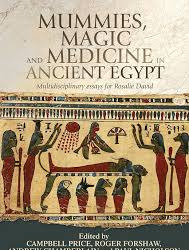
3 notes
·
View notes
Text
"Such was the end of Philip, who had made himself the greatest of the kings of Europe in his time, and because of the extent of his kingdom had made himself a throned companion of the twelve gods"
Diodorus Siculus book 16.
7 notes
·
View notes
Text
I don’t think enough people talk about the fact that there is literally a rock in the Underworld with Theseus’ asscheeks on it
#and he was literally given the epithet ‘flat assed’ for it#rip Pirithous tho#that man is the classical equivalent of adam in the cage#theseus#pirithous#diodorus siculus#horace#odes#classics#call him a sad birthday party bc this man has no cake
6 notes
·
View notes
Text
Okay we all know how Ovid’s Medusa isn’t actually accurate to earlier accounts and is just a singular version made popular through the fact his work was often the most accessible historically, and its ability to connect to victims of s/a, but can we also talk about that weird rationalizations made Pausanias-
“In the market-place of Argos is a mound of earth, in which they say lies the head of the Gorgon Medusa. I omit the miraculous, but give the rational parts of the story about her. After the death of her father, Phorcys, she reigned over those living around Lake Tritonis, going out hunting and leading the Libyans to battle. On one such occasion, when she was encamped with an army over against the forces of Perseus, who was followed by picked troops from the Peloponnesos, she was assassinated by night. Perseus, admiring her beauty even in death, cut off her head and carried it to show the Greeks. But Procles, the son of Eucrates, a Carthaginian, thought a different account more plausible that the preceding. It is as follows. Among the incredible monsters to be found in the Libyan desert are wild men and wild women. Prokles affirmed that he had seen a man from them who had been brought to Rome. So he guessed that a woman from them, reached Lake Tritonis, and harried the neighbours until Perseus killed her; Athena was supposed to have helped him in this exploit, because the people who live around Lake Tritonis are sacred to her.”
and Diodorus Siculus?-
“Now there have been in Libya a number of races of women who were warlike and greatly admired for their manly vigour; for instance, tradition tells us of the race of the Gorgons, against whom, as the account is given, Perseus made war, a race distinguished for its valour; for the fact that it was the son of Zeus, the mightiest Greek of his day, who accomplished the campaign against these women, and that this was his greatest Labour may be taken by any man as proof of both the pre-eminence and the power of the women we have mentioned. Furthermore, the manly prowess of those of whom we are now about to write presupposes an amazing pre-eminence when compared with the nature of the women of our day.”
Like, I’d say that’s uh… something. And it’s very weird.
#greek mythology#greek myths#ramblings#medusa#gorgon#mythology#classical mythology#Perseus#diodorus siculus#Pausanias#Source is theoi.com!!!
4 notes
·
View notes
Text
The Fake Texts of Ancient Greek 'Historians': the Behistun Inscription, Ctesias, Diodorus Siculus, Darius I the Great, and Semiramis
In a previous article published under the title 'Aristotle as Historical Forgery, the Western World’s Fake History & Rotten Foundations, and Prof. Jin Canrong’s Astute Comments', I wholeheartedly supported the position taken by the prominent Chinese Prof. Jin Canrong about Aristotle and I explained why Aristotle never existed as he is known today and most of his texts were not written by him, but by the pseudo-Christian Benedictine monks of Western Europe for the purpose of the ferocious imperial and theological battle that Rome carried out against New Rome-Constantinople and the Eastern Roman Empire. You can find the table of contents and a link to the publication at the end of the present article.

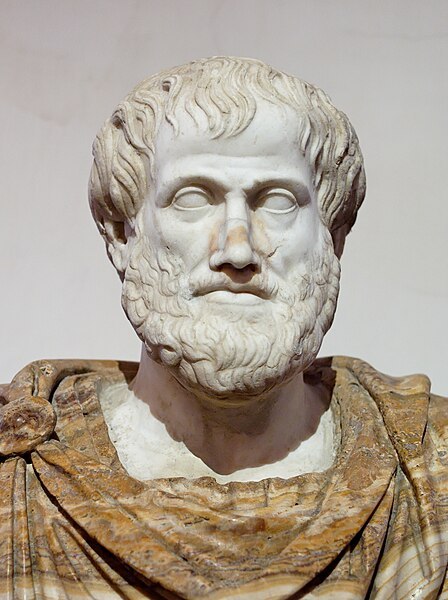
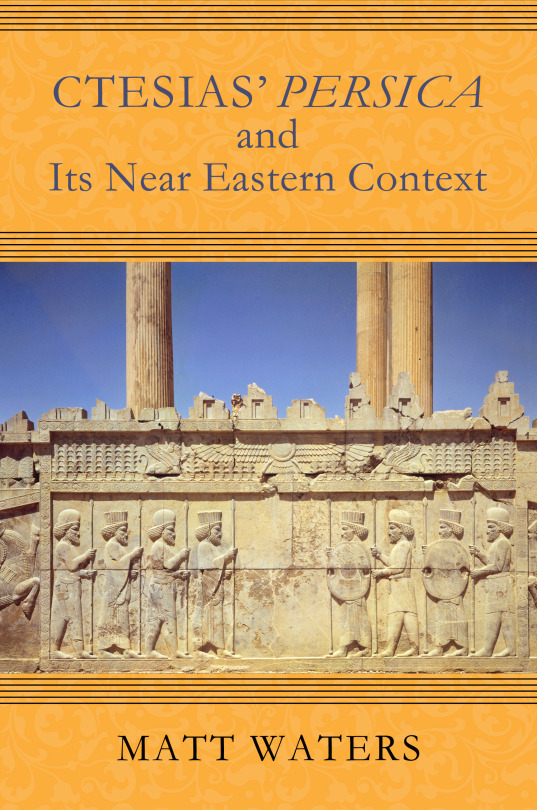
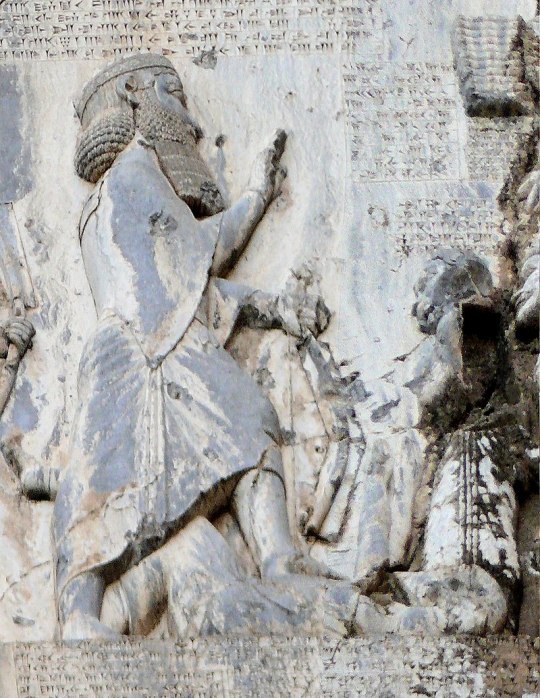
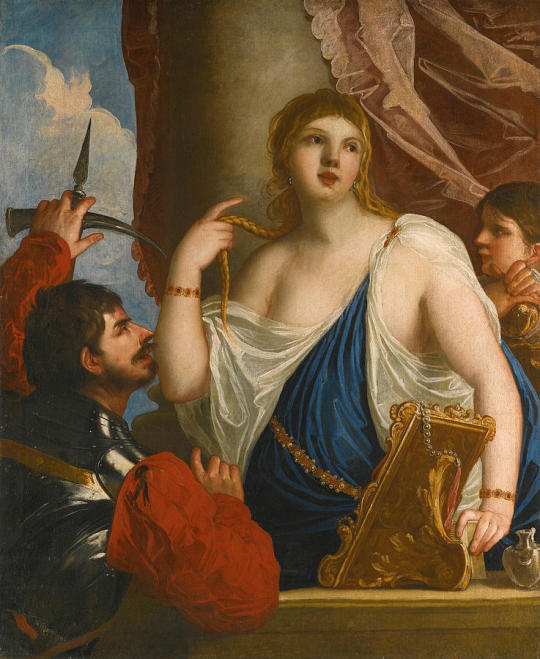
Contents
Introduction
I. A fictional concept: the origin of the fraud
II. A construct based on posterior textual sources
III. The deceitful presentation
IV. 5th century BCE texts found in 15th c. CE manuscripts do not make 'History'.
V. Abundant evidence of lies and deliberate distortions attested in the manuscript transmission
VI. Darius I the Great, the Behistun inscription, and Ctesias
VII. The historical Assyrian Queen Shammuramat and the fictional Queen Semiramis of the 'Ancient Greek sources'
VIII. The malignant intentions of the Benedictine liars: from the historical Darius I the Great to the fictional Semiramis
IX. The vicious distortions of the Benedictine liars: from Ctesias to Herodotus
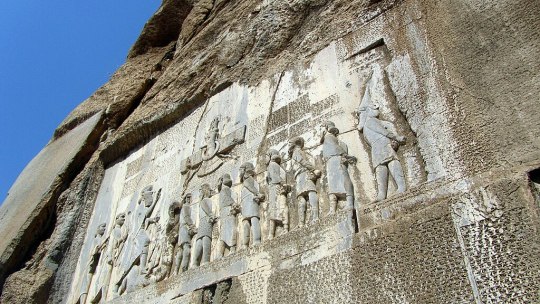
The Behistun inscription
Introduction
In the present article, I will offer a typical example of text falsification carried out by the Catholic monks, who did not 'copy and preserve' manuscripts of ancient Greek and Latin texts, as it has been mendaciously said by Western European and North American academics and lying scholars, but they purposefully falsified, distorted, concealed, destroyed and/or contrived numerous texts.
This enormous forgery took place in Western Europe between the 2nd half of the 8th century and the 1st half of the 15th century; the colonial era was launched exactly afterwards. For this reason, few manuscripts with Ancient Greek and Roman texts date before the 8th c.; in fact, most of them have been either distorted and replaced or hidden in the vast libraries still owned, controlled and administered that the anti-Christian Roman Catholic Church.
The purpose of this devious and evil effort was the fabrication of a fake narrative about the forged antiquity and the supposed importance of the Western Europeans according to the needs of world conquest, prevalence and preponderance of the pseudo-Christian Roman Catholic Church; this bogus-historical dogma, as direct opposition to and ultimate rejection of Orthodox Christianity, would be initially imposed as the 'scientific discipline of History' in Western Europe and subsequently projected onto the rest of the world by means of colonial invasion, indigenous identity destruction, moral integrity demolition, cultural heritage disintegration, educational subordination, economic exploitation, military subjugation, and socio-political domination.
In other words, the monastical scribes and copyists created an entirely fake Euro-centric past, which became the rotten foundation of Western Europe. This fallacy became known as Judeo-Christian world and Greco-Roman civilization. However, the decipherment of ancient languages (Egyptian hieroglyphic, Old Achaemenid Iranian, Assyrian-Babylonian, Sumerian, Hurrian, Hittite, Urartu, Ugaritic, etc) and the study of millions of original texts, which were not copies of earlier sources but contemporaneous to the events that they narrated, sounded the death knell of the era of history fabrication programs.
With the post-Soviet rise of the great continental powers (China, India, Russia, etc.), the economic-military-political-ideological-educational-academic-cultural tyranny of the Western World started being overthrown throughout the earlier colonized world. The historical forgery that the colonial rulers imposed collapsed, the falsehood of the Eurocentric dogma of World History started being revealed and rejected, and an overwhelming project of total de-Westernization appeared as a prerequisite for the liberation of the Mankind from the lies of the European Renaissance, the Western Humanities, the White Supremacism, the Western European colonialism and racism, as well as from the falsehood of numerous subsystems of the construct, such as Classicism, Hellenism, Orientalism, etc.
In our days, it is imperative for anti-colonial scholars to unveil the distortions applied to Ancient Greek and Latin texts by the medieval monks. Consequently, historians from all over the world have to work together in order to denounce and obliterate the Western fraud and the fake History of the Western Man, which consists in arbitrarily taking 14th c. CE manuscripts as authentic narratives of Ancient History.
I. A fictional concept: the origin of the fraud
Apparently, the present brief article cannot be an exhaustive presentation of the Western fraud, and of the historical forgery that the Western monks, manuscript copyists, collectors, academics and propagandists attempted to impose worldwide through colonial conquests, massacres and tyrannies. However, I can still enumerate the major founding myths of the Western World.
Two thematic circles of historical distortions and fraudulent claims made by the Western academia revolve around the following two entirely fabricated entities, which have conventionally but erroneously been called
a) "the Greco-Roman world" and
b) "Biblical Israel" and "Judeo-Christian civilization".
These ahistorical entities never existed. The original concept of those notions is purely fictional, and it therefore remains always unquestioned in the fraudulent Western universities. In this regard, the sources that the Western academics evoke to support their claims are posterior, untrustworthy, forged and therefore worthless.
At times, some of those texts represent merely ancient authors' misperceptions of earlier texts and authors; however, more often, the ancient texts have been tampered with. On other occasions, ancient texts that refute the lies of other historical sources are hidden from the general public and conventionally discussed among the Western academic accomplices.
II. A construct based on posterior textual sources
The entire construct hinges on the deceitful presentation of several types of material forged, collected, concealed, interpreted, contextualized, narrated, repeatedly but intentionally discussed, supposedly questioned, and selectively popularized; this was due to the fact that the said material was incessantly utilized for the colonial needs and targets of the Western European powers (England, France, Holland, Spain, Portugal, and more recently the US). In fact, the Western World's fake History was created as the ultimate support of all colonial claims.
This process happened within a system in which posterior textual sources (preserved in medieval manuscripts) have occupied the central position, whereas the ancient epigraphic material, which was contemporaneous to the historical events under study, has been deliberately disregarded.
All later discovered data and pieces of information were either adjusted to the construct or methodically hidden; this is how the original concept, pathetically believed almost as a religious dogma, remained totally unchallenged down to our days.
III. The deceitful presentation
The quintessence of the deceitful presentation involves a vicious trick; people (pupils and students, but also scholars and intellectuals, as well as the general public) are taught and made accustomed to care mainly about the absolutely insignificant dates of birth and death of historical persons (authors, rulers, etc.), and not about the dates of the manuscripts in which these individuals are mentioned as supposed authors; this situation turns readers, students and scholars into pathetic idiots.
Subsequently, we cannot seriously afford to describe Herodotus as a 5th c. BCE writer, because there is no manuscript with texts attributed to him, dating before the 10th c. CE. In addition, if we take into account the enormous number of other ancient authors decrying, denigrating and rejecting Herodotus' absurdities and malignancy, we have to permanently and irrevocably obliterate Herodotus from the History of Mankind and consider his false, paranoid and racist texts as a double Crime against the Mankind:
first, with respect to the original narrative (to which we don't have access as it was distorted by medieval monastical scribes and copyists) because the author attempted to disparage the superior Iranian civilization and the majestic Achaemenid universalist empire, while undeservedly praising the South Balkan barbarians, and
second, as regards the currently available text, which was forged as per the discriminatory intentions of the monks who altered and distorted it in their effort to fabricate the fake, modern divide (or dichotomy) East-West, and to offer a shred of historicity to it.
IV. 5th century BCE texts found in 15th c. CE manuscripts do not make 'History'.
People get therefore addicted to considering as a true and original 'work' (of an ancient author) the manuscript (or manuscripts) in which the specific treatise, essay or book was copied perhaps 10 or 15 centuries after the author composed it. Due to a long chain of intermediaries (namely library copyists, librarians, scholars, monks, collectors, purchasers and/or statesmen), the transmitted text may have been partly or totally changed.
There is absolutely no guarantee as regards the honesty, the good intentions, the unbiased attitude, and the benevolent character of the perhaps 5, 10, 20 or 50 persons who -living in different eras and without knowing one another- may have constituted the chain of (unknown to us) intermediaries between the hand of the author and that of the last copyist whose manuscript was preserved down to our times.
Example: very little matters today whether the ancient author Diodorus Siculus or Siceliotes (西西里的狄奧多羅斯) actually lived in the 1st c. BCE or in the 3rd c. CE; quite contrarily, what is important for history-writing is the fact that the earliest known manuscript of his famous 'Bibliotheca Historica' (世界史) dates back to the 10th c. CE.
Consequently, the first piece of information that should be stated after the name of any 'ancient' Anatolian, Macedonian, Thracian, Greek, Roman and other author is the date of the earliest extant manuscript of his works.
V. Abundant evidence of lies and deliberate distortions attested in the manuscript transmission
An extraordinarily high number of original sources excavated in Mesopotamia, Egypt, Anatolia, Canaan, Iran and elsewhere, and subsequently deciphered, can be dated with accuracy; example: the Annals of great Assyrian emperor Tiglath-pileser III (745-727 BCE) were written during his reign. They are contemporaneous and therefore original.
However, in striking contrast to them, almost all the manuscripts with the works of ancient Greek and Roman authors whose texts have formed the backbone of the fraudulent historical dogma of the Western academia are not contemporaneous but posterior by, at times, 1500 or 2000 years.
Even worse, numerous ancient Greek authors' texts were not preserved through a manuscript tradition at all; they were saved as references in posterior authors' works. This concerns, for instance, Ctesias (克特西亞斯), an Ancient Carian (Anatolian) physician and erudite scholar, who lived and worked in the court of the Achaemenid Iranian emperor Artaxerxes II in the 5th c. BCE.
Later, willing to offer potential guidebooks to Iran and India for the use of various peripheral peoples and tribes of the Balkan region, Ctesias elaborated in Ancient Ionian (愛奧尼亞希臘語) two treatises to describe the state of things in Iran and in India. To the Western academic bibliography, his works are known (in Latin) as 'Persica' and 'Indica'.
These texts were not saved integrally in manuscripts copied for the purpose of preserving Ctesias' works, but they were preserved in Diodorus Siculus' 'Bibliotheca Historica'. Although he is not known through authentic and contemporaneous Iranian sources, we can deduce that Ctesias certainly spoke fluently the official language of the Empire and read Old Achaemenid cuneiform. Eventually, he may have also studied and learned Babylonian and Elamite cuneiform, namely two ancient Mesopotamian cuneiform languages and writings the use of which was maintained by Iranian scribes.
Apparently, Ctesias had a firsthand insight, as he lived for many years in Parsa (Persepolis), the capital of the Achaemenid Empire and he also traveled extensively along with the Iranian emperor. But, unfortunately, the following ordeal was produced.
VI. Darius I the Great, the Behistun inscription, and Ctesias
One century before Ctesias served Artaxerxes II, the empire of Iran was saved by Darius I the Great (大流士一世; reign: 522-486), who overthrew a usurper, namely the Mithraic (密特拉教祭司) magus Gaumata (高墨达), and by so doing, preserved on the throne a dynasty of faithful Zoroastrian (瑣羅亞斯德教徒) monarchs.
To commemorate his great victory and the consolidation of the his dynasty, Darius I the Great had an enormous rock relief and a monumental inscription (貝希斯敦銘文) engraved on the rocks of Mount Behistun (貝希斯頓山), at a distance of 150 km west of Hamadan (哈马丹; Ekbatana/埃克巴坦那) in Western Iran (15 m high by 25 m wide and 100 m up the cliff). As it can be easily understood, these events occurred after the assassination of Cambyses, at the very beginning of Darius I the Great's reign.
It goes without saying that the successors of Darius I the Great and the imperial Iranian administration knew perfectly well the historical details and were fully aware of the imperial inscription that immortalized the event, which had obviously become the cornerstone of the imperial education.
VII. The historical Assyrian Queen Shammuramat and the fictional Queen Semiramis of the 'Ancient Greek sources'
However, one century later, when Ctesias lived in Iran, served the Iranian Emperor, and spoke Old Achaemenid Iranian (and if not, he was surrounded by the Empire's top interpreters and advisers), something disastrously odd 'happened'.
According to Diodorus Siculus, who explicitly stated that he extensively quoted from Ctesias' text (Bibliotheca Historica, II 13), the imperial Carian physician and author appears to have attributed the Behistun inscription and the rock reliefs to none else than the Assyrian Queen Shammuramat (薩穆-拉瑪特), who was the queen consort of the Assyrian Emperor Shamshi Adad V (沙姆什·阿達德五世; reign: 824-811) and co-regent (811-805) during the first years of reign of her son Adad Nirari III (阿达德尼拉里三世; reign: 811-783)!
Furthermore, in the 'Ancient Greek' text of Diodorus Siculus, the monumental inscription was said to be written in Assyrian cuneiform (Συρίοις γράμμασιν)! Even worse, in the same text (as preserved today), it was also stated that, in the rock relief, there was also a representation of the Assyrian queen!
Ctesias' text, as preserved by Diodorus Siculus, is truly abundant in information, but it is historically impossible and therefore entirely forged. Due to this and many other texts, an enormous chasm was unnecessarily formed between
a) the historical queen Shammuramat of Assyria, whose historicity is firmly undeniable, due to the existence of several contemporaneous cuneiform sources excavated in Assyria, and subsequently deciphered and published,
and
b) the purely fictional Assyrian queen Semiramis (沙米拉姆) of the posterior Ancient Greek textual sources that were supposedly 'preserved' (but in reality deliberately distorted and forged) in the Benedictine manuscripts of Western Europe's monasteries.
However, if we examine closely the facts, we will surely understand what truly occurred in this case; then, we will be able to fathom how the fake History of the Western world was fabricated.
The Behistun inscription is trilingual, as it was written in Old Achaemenid Iranian (the earliest form of written Iranian languages), Babylonian, and Elamite; this was a very common practice during the Achaemenid times (550-330 BCE). The main figure of the associated rock relief is Darius I the Great, evidently the representation of a male royal.
One way or another, with respect to the Behistun inscription and rock relief, Ctesias certainly knew everything that we know today after the successive decipherments of the Old Achaemenid, Babylonian and Elamite cuneiform writings, or perhaps even more, due to the then extant oral tradition.
VIII. The malignant intentions of the Benedictine liars: from the historical Darius I the Great to the fictional Semiramis
The Behistun inscription is not Assyrian; the representation is not that of female royal; and the monument is totally unrelated to Shammuramat, who had lived 300 years before Darius I the Great and 400 years before Artaxerxes II's physician Ctesias. More importantly, by that time, the Assyrian Empire did not occupy the lands surrounding Behistun. Accompanied by Iranian imperial officers and his associates, Ctesias certainly learned all the details of the monumental inscription that we can now read in articles, courses, lectures, books and encyclopedias.
The narrative was a triumph for Darius I the Great and a spectacular rebuttal of the vicious Mithraic Magi who had supported the defeated evil sorcerer and villain Gaumata. Apparently, writing a guidebook for Iran to help marginal people of the Empire's Balkan periphery, Ctesias did not have any reason to say lies. Moreover, we don't have any reason to believe that Diodorus Siculus needed to distort the truth to that extent, when copying and thus preserving Ctesias' masterpiece for the posterity.
However, the transmission of the details about the Behistun inscription embarrassed the Benedictine copyists who wanted to denigrate Darius I the Great and to portray his great empire in a most derogatory manner. They had already proceeded in this manner, distorting other manuscripts, forging texts, and fabricating their pseudo-historical narratives at will.
That is why Ctesias' pertinent text, which had certainly been preserved in its original form within Diodorus Siculus' Bibliotheca Historica, was intentionally distorted by the Benedictine 'Holy Inquisition of Libraries', which fabricated the myths of today's Western world some time after the middle of the 8th c. CE. To be accurate, Ctesias' historical description was entirely replaced by a fictional and historically nonsensical account.
The unbelievable lies -invented and included in Diodorus Siculus' quotations from Ctesias- risked making of the fictional queen Semiramis a world ruler! Whereas the Assyrian Empire at the end of the 9th c. BCE did not control even the western half of today's Iranian territory, the unequivocally mythicized Semiramis had supposedly sent her armies up to India where those fictitious Assyrian soldiers were trampled by the elephants. This worthless narrative that replaced Ctesias' original text may very well have been invented as a 'historical' excuse for Alexander the Great's failure to advance deep inside India.
IX. The vicious distortions of the Benedictine liars: from Ctesias to Herodotus
But if the fictional Semiramis' Indian campaign is entirely false, so are then the preposterous narratives of Herodotus about Darius I the Great's and Xerxes I the Great's campaigns in the insignificant and barbarian circumference of South Balkans. These texts involved evil purposes, heinous anti-Iranian biases, fictional battles, racist discourses, vicious lies, incredibly large number of the Iranian armies, and absurdly high number of Iranian casualties.
The mendacious but idiotic Benedictine monks, who wrote those slander tales did not apparently expect that, sometime in the future, excavations would bring to light splendid Iranian antiquities, original cuneiform documentation, and trustworthy contemporaneous historical sources, whereas a systematic effort of decipherment would offer to people all over the world direct access to historical texts written in dead languages, thus irrevocably canceling Herodotus' nonsensical report and, even more importantly, the later distortions that the Benedictine monks made on their worthless manuscripts.
In any case, had those fictional campaigns against 'Greece' had a shred of truth to them, they would have certainly been documented one way or another in various Old Achaemenid, Babylonian, Elamite, Imperial Aramaic, Egyptian hieroglyphic or other sources; but they were not.
Even worse, the meaningless and ludicrous battles of Marathon, Thermopylae, Salamis, and their likes would have been commemorated by the Seleucids, the Ptolemies, and the Attalids all the way down to the Romans and the Eastern Romans. But we know quite well that the nonexistent, fictional past of the so-called Ancient Greek world was absolutely irrelevant to them: precisely because it had not yet been fabricated.
===================
Aristotle as Historical Forgery, the Western World’s Fake History & Rotten Foundations, and Prof. Jin Canrong’s Astute Comments
Contents
I. Aristotle: a Major Founding Myth of the Western World
II. When, where and by whom was the Myth of Aristotle fabricated?
III. The Myth of Aristotle and its first Byproducts: Scholasticism, East-West Schism, the Crusades & the Sack of Constantinople (1204)
IV. Aristotelization: First Stage of the Westernization and the Colonization of the World
V. Aristotelization as Foundation of all the Western Forgeries: the so-called Judeo-Christian Heritage and the Fraud of Greco-Roman Civilization
VI. The Modern Western World as Disruption of History
VII. The Myth of Aristotle and the Monstrosity of Western Colonialism
======================
Download the article in PDF:
#Ctesias#Diodorus Siculus#Behistun Inscription#iran#Achaemenid#Behistun#Bisotun#Darius I the Great#Gaumata#Mithraism#Zoroastrianism#Ahura Mazda#Mithra#Xerxes I#Herodotus#Ancient Greeks#manuscript transmission#Shamshi Adad V#Adad Nirari III#Shammuramat#Semiramis#Benedictines#Renaissance#Classicism#Classics#Orientalism#Hellenism
1 note
·
View note
Text
“She stands beside the sick in their dreams providing remedies for their illnesses and if they declare to her their obedience then they regain their health contrary to all expectations.”
- Diodorus Siculus, Bibliotheca Historica Book 1, 25
(On Isis as a dream healer)
0 notes
Text


this is like when you find a snake skin l but the snake itself is long gone. like the shape of this guy is here but who he actually is a mystery
#idk I just think it's an interesting contrast between the account & the footnote#the fact of his fame outlived the fame itself#thoughts#this is diodorus siculus btw
23 notes
·
View notes
Text
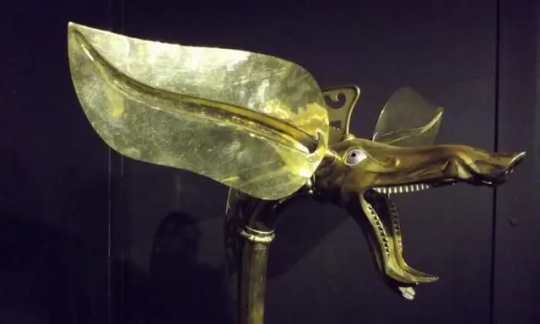

The 'Carnyx' Nightmare of the Roman Soldiers
The Carnyx was a brass musical instrument used as a psychological weapon of war by the ancient Celts between 300 BC and 200AD in western and central Europe and beyond.
The carnyx was once widespread throughout much of Europe, although only a dozen or so fragments are known to us.
It was carried by bands of Celtic mercenaries; it was present at the attack on the Greek sanctuary at Delphi in 279 BC; it defied Julius Caesar in Gaul; and it faced Claudius when he invaded Britain. They are even shown on a Buddhist sculpture in India, proof of the far-flung connections of the Iron Age world.
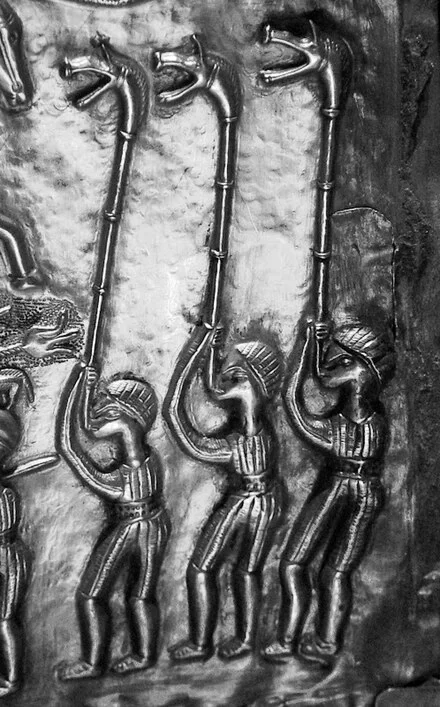
However, they were not only used by the Celts; they were also used by the Dacians in modern Romania. The term “Celtic” is a complicated one. The concept of a pan-European Celtic culture is a myth; rather, aspects of art and technology were shared across vast distances by diverse cultures. The carnyx was one example of this.
A 12-foot-long, thin bronze tube with right-angle bends on both ends made up the carnyx. The lower end ended in a mouthpiece, and the upper end flared out into a bell that was usually decorated to look like a wild boar’s had. Historians believe it had a tongue that flapped up and down, increasing the noise made by the instrument. The carnyx was played upright so that the boar’s head bell protruded well above the warriors’ heads. Its primary goal was to create more noise and confusion on the battlefield.
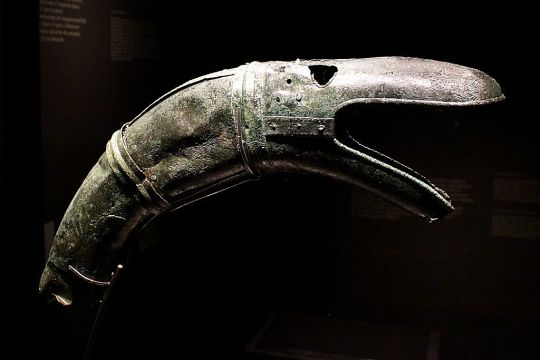
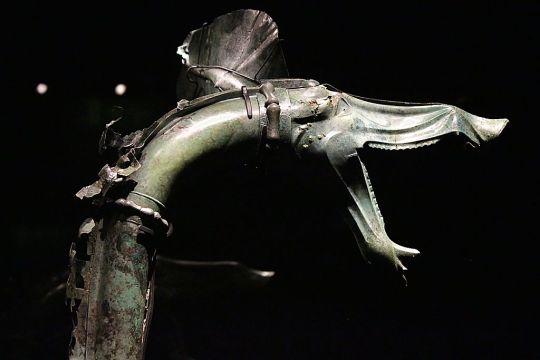

The Greek historian Polybius (206-126BC) was so impressed by the clamor of the Gallic army and the sound of the carnyx, he observed that “there were countless trumpeters and horn blowers and since the whole army was shouting its war cries at the same time there was such a confused sound that the noise seemed to come not only from the trumpeters and the soldiers but also from the countryside which was joining in the echo”.
And the Roman historian Diodorus Siculus wrote, “Their trumpets are also of a peculiar and barbaric kind which produce a harsh, reverberating sound suitable to the confusion of battle.”
Archaeologists discovered a hoard of ritually destroyed weapons in 2004, including a dozen swords, scabbards, spearheads, a shield, bronze helmets, an iron helmet shaped like a swan, a cauldron, animal remains, and seven carnyces. Before the Tintignac discovery, the remains of only five actual carnyces had been found.
The finest was unearthed in Deskford, Scotland in 1816. The Deskford carnyx only has the boar’s head bell and is missing the mane, tongue, and tubing. Images of Carnyx players have been found as well. A Roman denarius, dating from 48 BC bears a representation of a Carnyx. Three carnyx players are featured prominently on the Gundestrup Cauldron, which was found in a Danish peat bog.
One of the seven found at Tintignac, on the other hand, was almost entirely complete. The Tintignac Carnyx was broken into 40 pieces. When puzzled back together, it was found to be just an inch short of six feet long with a single missing section of the tube. The bell was a boar’s head with protruding tusks and large pointed ears. Once restored, the Tintignac Carnyx proved to be the first virtually complete carnyx ever found.
By Leman Altuntaş.
Music video by John Kenny.
#The Carnyx#The 'Carnyx' Nightmare of the Roman Soldiers#Iron Age war trumpet#ancient artifacts#archeology#archeolgst#history#history news#ancient culture#ancient civilizations#celtic mythology#celtic history#roman history#roman empire#roman legion
2K notes
·
View notes
Text
„Semelê was loved by Zeus because of her beauty, but since he had his intercourse with her secretly and without speech she thought that the god despised her; consequently she made the request of him that he come to her embraces in the same manner as in his approaches to Hera.” (Diodoros of Sicily, Library of History 4.2.1)
#lmao what? Without speech? So Zeus was like 'I'm here to get laid not to chat'?#diodorus siculus#semele#zeus#excerpts#Diodoros gives at least 3 different accounts of this incident. it's great#greek mythology
7 notes
·
View notes
Text

ive fallen into a bit of a rabbit hole of reading about the stories of ancient intersex people transitioning socially from one gender to the other as depicted in diodorus siculus's writing and i was just. so thrilled by the way he describes his reasoning for telling these stories- not for entertainment, but the widen his readers' perspectives
like yes he's still an ancient author and some of the ways he talks about the topic arent up to par with modern understanding, but...it gives you a sense of hope and connection to the humanity that has always existed in us
#these are some incredible stories btw#tagamemnon#queueusque tandem abutere catilina patientia nostra
782 notes
·
View notes
Text

Cesare Saccaggi (1868-1934)
"Great Semiramis, Queen of Assyria" (c. 1905)
Oil on canvas, gold and precious stones
The myth of Semiramis has its roots in late antiquity. Historiography, religion, art and literature have contributed to passing on different and contradictory legends linked to her figure over the centuries: some recognize her as the enlightened Assyrian ruler Shammuramat, wife of King Shamshi-Adad V and regent of his son Addu-Nirari III--to whom we owe the realization of the hanging gardens of Babylon.For others, Semiramis is the daughter of a nymph, abandoned in the desert and then fed by doves - the 'daughter of the air', according to Calderón de la Barca and Carlo Gozzi. Or she is the daughter of the goddess Derceto and the Syrian Caistro, married first to Onne, then to King Nino, with whom she had a son who, according to tradition, when he became an adult, chased her from the throne and killed her. During her reign, Semiramis conquered Mesopotamia, Egypt and Ethiopia. Herodotus and Diodorus Siculus speak of her as a great and good sovereign.
#paintings#art#artwork#painting#female portrait#cesare saccaggi#oil on canvas#fine art#italian artist#gold#precious stones#portrait of a woman#big cat#animals#costume#costumes#history#mythology#assyrian#ancient assyria#aesthetic#aesthetics#white dress#dressess#early 1900s#early 20th century
408 notes
·
View notes
Text

SUMMARY
Why did human beings first begin to write history? Lisa Irene Hau argues that a driving force among Greek historians was the desire to use the past to teach lessons about the present and for the future. She uncovers the moral messages of the ancient Greek writers of history and the techniques they used to bring them across. Hau also shows how moral didacticism was an integral part of the writing of history from its inception in the 5th century BC, how it developed over the next 500 years in parallel with the development of historiography as a genre and how the moral messages on display remained surprisingly stable across this period. For the ancient Greek historiographers, moral didacticism was a way of making sense of the past and making it relevant to the present; but this does not mean that they falsified events: truth and morality were compatible and synergistic ends.
Moral History from Herodotus to Diodorus Siculus
Lisa Irene Hau
2016
Published by: Edinburgh University Press

Lisa Irene Hau is Lecturer in Classics at the University of Glasgow
4 notes
·
View notes
Text
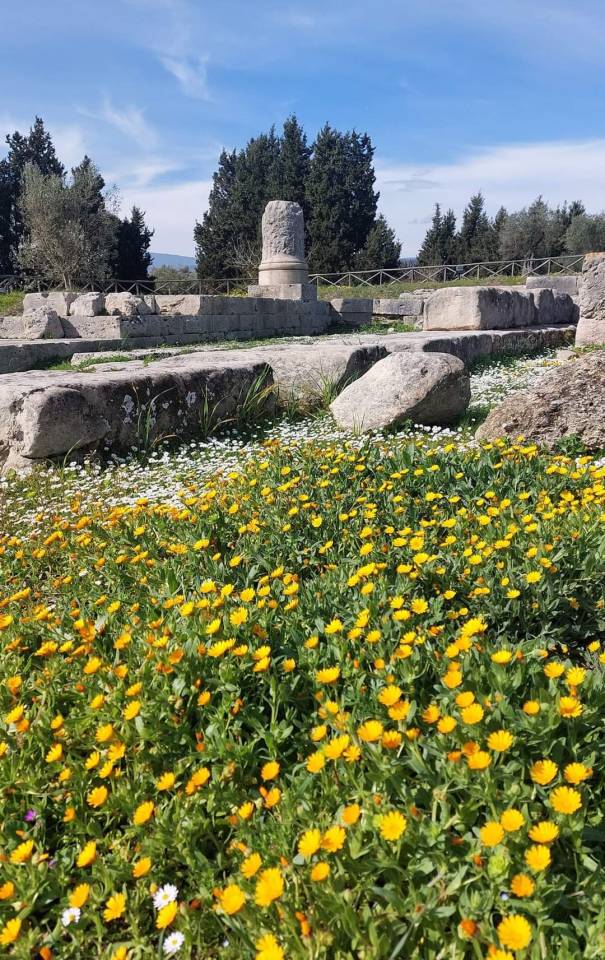

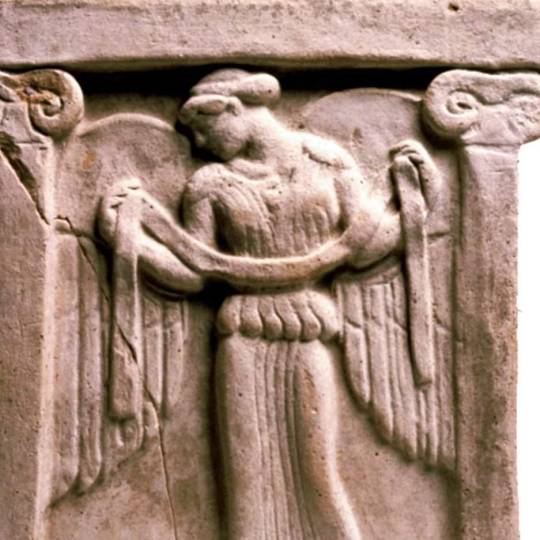
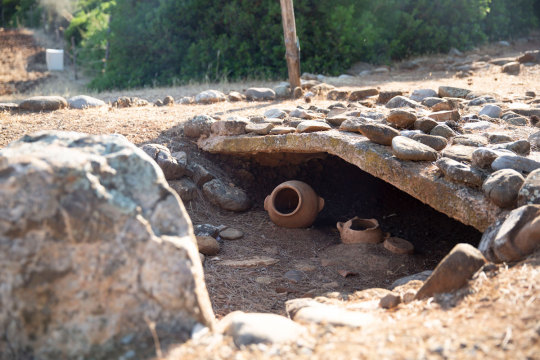

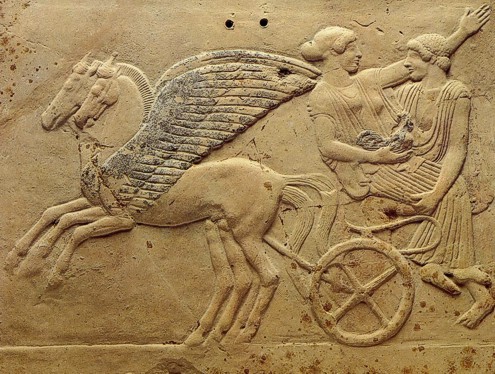




Locri, Calabria, Italy
Locri Epizefiri (Greek Λοκροί Ἐπιζεφύριοι; from the plural of Λοκρός, Lokros, "a Locrian" and ἐπί epi, "on", Ζέφυρος (Zephyros), West Wind, thus "The Western Locrians") was founded about 680 BC on the Italian shore of the Ionian Sea, near modern Capo Zefirio, in Southern Italy's Calabria, by the Locrians, apparently by Opuntii (East Locrians) from the city of Opus, but including Ozolae (West Locrians) and Lacedaemonians.
Due to fierce winds at an original settlement, the settlers moved to the present site. After a century, a defensive wall was built. Outside the city there are several necropoleis, some of which are very large.
Locris was the site of two great sanctuaries, that of Persephone and of Aphrodite. Perhaps uniquely, Persephone was worshiped as protector of marriage and childbirth, a role usually assumed by Hera, and Diodorus Siculus knew the temple there as the most illustrious in Italy.
In the early centuries Locris was allied with Sparta, and later with Syracuse. It founded two colonies of its own, Hipponion and Medma.
During the 5th century BC, votive pinakes in terracotta were often dedicated as offerings to the goddess, made in series and painted with bright colors, animated by scenes connected to the myth of Persephone. Many of these pinakes are now on display in the National Museum of Magna Græcia in Reggio Calabria. Locrian pinakes represent one of the most significant categories of objects from Magna Graecia, both as documents of religious practice and as works of art. In the iconography of votive plaques at Locri, her abduction and marriage to Hades served as an emblem of the marital state, children at Locri were dedicated to Persephone, and maidens about to be wed brought their peplos to be blessed.
During the Pyrrhic Wars (280-275 BC) fought between Pyrrhus of Epirus and Rome, Locris accepted a Roman garrison and fought against the Epirote king. However, the city changed sides numerous times during the war. Bronze tablets from the treasury of its Olympeum, a temple to Zeus, record payments to a 'king', generally thought to be Pyrrhus. Despite this, Pyrrhus plundered the temple of Persephone at Locris before his return to Epirus, an event which would live on in the memory of the Greeks of Italy. At the end of the war, perhaps to allay fears about its loyalty, Locris minted coins depicting a seated Rome being crowned by 'Pistis', a goddess personifying good faith and loyalty, and returned to the Roman fold.
The city was abandoned in the 5th century AD. The town was finally destroyed by the Saracens in 915. The survivors fled inland about 10 kilometres (6 mi) to the town Gerace on the slopes of the Aspromonte.
Today, the modern town of Locri boasts a National Museum and an Archaeological Park, etirely dedicated to the ancient Greek city. The museum preserves the most important findings of the time, such as vases, pinakes, tools used in everyday life, architectural remains from the various excavation area.
Follow us on Instagram, @calabria_mediterranea
#locri#calabria#italy#italia#south italy#southern italy#mediterranean#mediterranean sea#magna graecia#magna grecia#archaeology#archeology#ancient#art#ancient art#history#ancient history#greek#greek art#ancient greece#landscape#italian#italian landscape#landscapes#europe#persephone#olive trees#olive tree#nature#nature photography
72 notes
·
View notes